Video
youtube
The difference between rats vs mice
Seeing rodent poop at your business or home? It could be mouse or rat.
Visit our Youtube and learn how to identify the difference. or Call for rodent removal...
#rats #mouse #rodent #pestservices #difference #Toronto #Canada#pestcontrol #ratvsmouse #happyfriday #friday #TGIF #weekendvibes#business #restaurants #commercial #college #foodindustry #condo#apartment
1 note
·
View note
Text
Give Thanks!
🍂Fun Thanksgiving Recipe 🍂
🦗🍪Cricket Cookies 🍪 🦗
What better way to celebrate Thanksgiving this weekend then with a little extra protein in your cookies! Try it out and post pictures of your final product below in the comments!
INGREDIENTS:
1 egg 🥚
1/3 cup smooth almond butter (or Peanut Butter) 🥜
1/2 cup organic pumpkin puree 🎃
2/3 cup organic coconut sugar 🥥
2 tsp pure vanilla extract
2 cups + 2 Tbsp blanched almond flour
***2 Tablespoons (20 g) of Cricket Powder 🦗
1 1/2 Tbsp pumpkin pie spice 🎃
2 Tbsp espresso powder
1/2 tsp baking soda
1/4 tsp fine grain sea salt
For more interesting recipes, comment or DM!

0 notes
Text
YES, PESTS ARE SEASONAL!
Who knew different bugs appear in different seasons? Yes, pests are seasonal! Fall is the season for occasional invaders like boxelder bugs, west conifer bugs, cluster flies and marmorated stink bugs. Winter is fast approaching, and these insects are looking for warmth, food and water right inside of your home. At this time of the year you will see an abundance of stink bugs, boxelder bugs, lady bugs and cluster flies around your house. They will be congregating on walls, coming out from vents, harboring in cracks and crevices, attracted to indoor plants etc. However, seeing them often you might not know the nuisance and threat they pose to your family. GreenLeaf Pest Control has gathered some facts to prepare you with the tools you will need this fall to protect your family and pets!
We all work hard to live in our dream home. It’s important to routinely maintain and protect our homes. Not only does it help protect against occasional invaders, but properly sealing up cracks and crevices can help keep your house warm, saving you money on hefty hydro bills in the long run! Also these pesky insects and even rodents can be responsible for damaging your home, creating unwanted repairs that can become costly!
FACTS ABOUT OCCASIONAL INVADERS
Some can bite or pinch
Secrete foul odors
They can cause damage to plants
Some stain indoor furnishings
Damage fabrics
They like to hide in cracks around windows, doors, electrical outlets, light switches etc.
The Inside of the building or homes are more accommodating for occasional invaders!
Brown Marmorated Stink Bugs
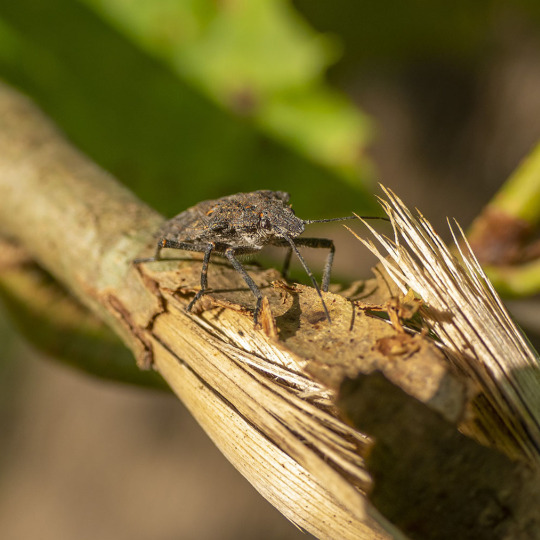
Winter is suspected to come early this year and bugs are making their way into our homes where they can overwinter. Likewise, other overwintering occasional invaders often hide on the sides of buildings, cracks in warm areas of your home. Do you know how stink bugs get their name? Well, from the odor they emit! Although they don’t bite, you may still experience red, irritated skin if they land on you and scratch you.
Overwintering pests hiding in the spots where homeowners are unable to detect them, even though the scent they emit attracts other pests. Despite this, their tendency is to invade homes in high numbers and can be a huge nuisance. When squished, they also emit an odour that some people have compared to cilantro or skunks. Yuck!
Contact GreenLeaf Pest Control Today!
Boxelder bugs
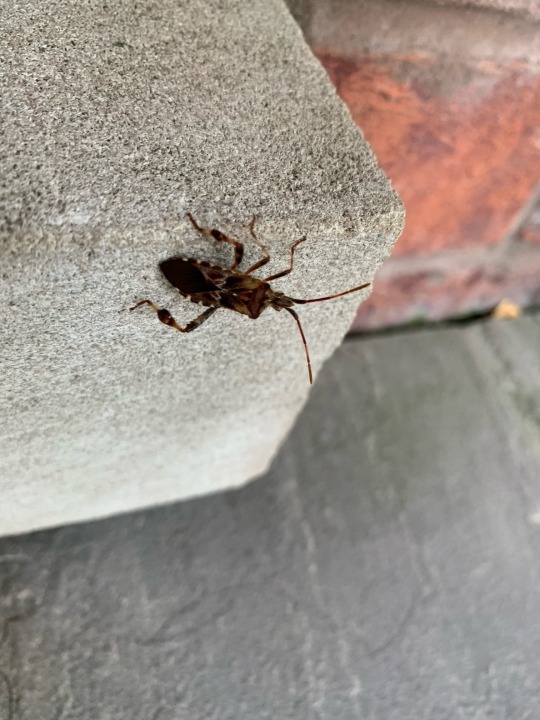
The neat picture of a boxelder bug taken by our very own #Mr.KnowBugs. Bugs have different names according to their behaviour. Boxelder bugs are red and black with orange markings on their back with a somewhat-flattened, oval-shaped body. These creepy crawlers feed on plants and usually live in trees or plants. In the late fall, boxelder bugs are in search of a new home to overwinter, like on the side of a rock, tree and buildings where the sun hits. During winter, boxelder bugs like to hide in small cracks and crevices in walls, baseboards as they seek to find warm places.
Boxelder bugs are most commonly seen in late summer and in the fall. Depending on the person, they can cause a slight irritation and produce a red spot similar to a mosquito bite. When squeezed or handled roughly, nasty bugs can leave red marks or stains which can result in discoloration of curtains, drapes, clothing, etc. Looking for Prevention? Learn how to get rid of them!
Lady bugs

Ladybugs, otherwise known as lady beetles or ladybird beetles are also very common at this time of year. There are approximately 400 species, and only 3 feed on plants. They are beneficial as they eat all stages of soft-bodied insects. In late fall, adult beetles look for safe places to reside as the harsh winter is around the corner. However, some ladybugs look for places like buildings and homes to protect them over the long winter months.
Occasional invaders (millipedes, centipedes, earwigs, ticks, fleas etc.) will be very active over the next couple of months. Be diligent and protect your home today! If you are already seeing activity, be sure to contact a licensed professional technician to assist you.
To learn more about occasional invaders; identification, facts and prevention, please visit GreenLeaf Pest Control!

Get ahead of seasonal invaders and contact GreenLeaf Pest Control today so we can proactively protect your home all winter along from unwanted insects. We are local and trusted – just one call away! 416-998-9473
About the Author:
Navjot Kaur, the Digital Marketing Specialist and Web-Developer at Greenleaf Pest Control. Happily graduated from Lambton College in Mobile app design & development. She is new to the pest control world. In her free time, she is an avid gardener, reader, likes to explore and definitely has some great dance moves.
#winterpest#ocassionalinvaders#pest service#stinkbugs#toronto#bradford#newmarket#pestcontrolintoronto#howtoridofpests#insects#bugs fallpests
0 notes
Text
5 Indoor Pests to Look Out For During Winter

With temperatures sliding and snowfall amounts rising, you might think winter is a quiet period for pests in southern Ontario. While many of us encounter pests such as wasps, mites and more during the summer, the onset of winter can also be a big problem for keeping pests under control.
In fact, humans are not the only animals that prefer to stay inside during colder temperatures, as many rodents and insects make their way into our homes and businesses.
In today’s post, GreenLeaf Pest Control will be looking at pests that home and business owners should be on the lookout for during Winter 2021. If you suspect any of these pests are on your property, contact us today and we will give you the professional pest control help you need.
1. Cockroaches
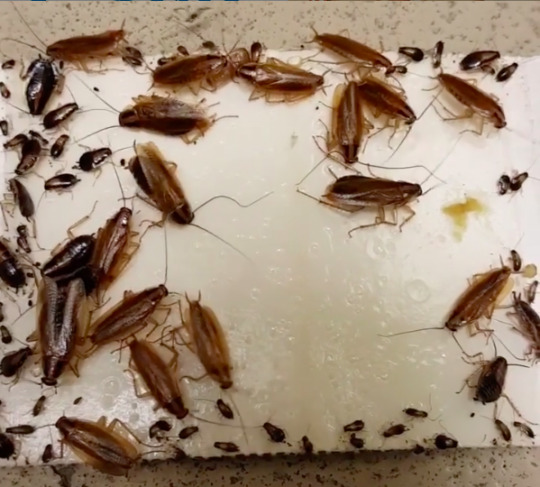
Cockroaches are found all over the world, including here in Canada and Ontario. With over 4000 different cockroach species across the globe, you might be worried about them invading your home or business.
The good news is that only a handful roaches are the pests in Ontario.
These are:
German Cockroach
Brown-Banded Cockroach
Oriental Cockroach
Pennsylvania Wood Cockroach
The reason why cockroaches are common winter pests in Ontario is due to our cold climate.
Although many varieties of cockroaches are very hardy and some are even capable of producing their own type of antifreeze, they still enjoy the warm indoors. With temperatures regularly dropping below freezing and a sudden lack of food, pest cockroaches will seek to invade your home for food and shelter. They typically enter through human transport, such as a bag or garbage bin, or they manage to enter around windows and doors.
The problem with cockroaches in winter is that they are highly social pests. This means that once you have identified one in your home or business, you are quite likely to find more very soon. Cockroaches are prolific breeders and can produce nearly 300 offspring in just one year, meaning pest control is a must even if you can only see just one inside your property. Ignoring them could result in them contaminating your food and spreading illness to others.
Learn more about cockroaches here, including what to do if you spot one inside your property.
2. Fleas
While you might associate fleas with pets and spending more time outdoors in the summer, fleas can also invade your home during the winter.
Just like cockroaches, fleas dislike the cold winter temperatures as it slows down their reproduction rate and will typically kill most adult fleas. However, the problem isn’t necessarily the fleas outside, but rather the fleas that are already inside your property.
The drop in temperatures that occurs during late fall will send many adult fleas into your home where they will lay eggs and reproduce. As capable jumpers that can leap 150 times their own height, fleas can travel very easily and will often use pets and even other pests to enter your home.
Getting rid of fleas should be a priority for any homeowner, even though they prefer biting pets over humans. This is because flea bites can make your pet very sick and even cause them to have an allergic reaction.
Discover more about fleas here, including how you can take proactive steps to prevent a flea infestation.
3. Bed Bugs

Bed bugs are commonly known indoor pest that infests many apartment and condo buildings across southern Ontario, including in cities like Toronto.
Keep an eye out for these 6-legged creatures if you can. However, at less than ¼ inch long and generally nocturnal (active at night), adult bed bugs can be difficult to identify until you have been bitten. Fortunately, bed bug bites do not transmit disease, but they will leave with itchy, red and sore marks on your skin.
Bed bugs feed off human blood and will prefer to bite during the night, which is why they are called bed bugs. They do not always live in your bed and can be found in all sorts of hidden nooks in your home, including picture frames, wallpaper and in your car.
Learn how to keep bed bugs out here.
4. House Mice
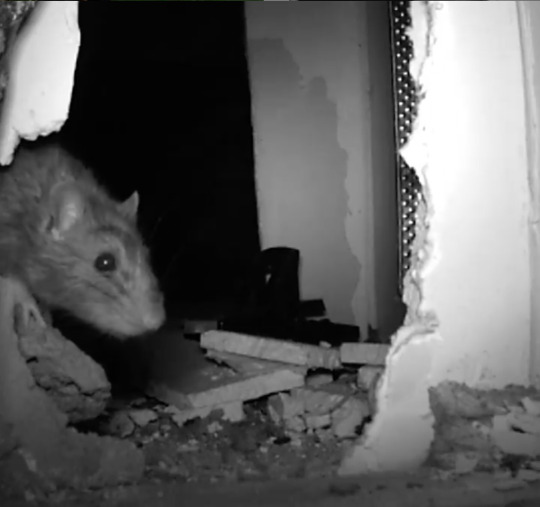
Not all pests are bugs. In fact, some of the most harmful and common pests are rodents like house mice. Despite sounding local, house mice originate all the way from Central Asia – where they traveled over time to become widespread across Canada and the United States.
You may presume house mice are harmless and how similar they are to pet mice. However, house mice can be a nuisance and a health and safety hazard. This is because they enjoy eating human food, such as cereal, bread and other grain products and easily transfer germs in doing so.
Just like many bugs, house mice are fast breeders, especially considering they are mammals. A typical female house mouse will have over 6 babies every three weeks, leading up to 35 offspring per year. If you find house mice on your property, you must act quickly and contact a pest control company before their population is allowed to swell as well as do some major damage to your home and health.
Despite their large numbers and size, it can be difficult to catch house mice as they are nocturnal. You can detect whether they are in your property by looking for signs such as droppings, gnaw marks or the appearance of hidden burrows in your walls and floors. If there are many mice in your home, you may begin to smell their urine, which helps them to communicate with others.
Learn more what to do if you find a house mice infestation here.
5. Rats

As well as house mice, rats are another type of rodent that will invade your home or business during the cold winter months.
One type of rat, known as the Norway Rat, is a common pest that can easily infest many unprotected homes across Southern Ontario. Norway rats are much larger than a typical house mouse and usually reach about 8 inches in length, meaning they are easily visible if seen in daylight.
Norway rats are not picky when it comes to food too and will gladly eat many different types of food across your home. They are particularly fond of dog food. This can be an issue as many homeowners feed their dog in an open dish on the floor. Therefore, if there is ever any leftover food in this dish, a rat may feed on it during the night without the owner knowing.
Not only are rats a hygiene issue as they spread disease, but they are renowned for their gnawing abilities which can cause major structural damage to your property. If left alone, their population will increase and the risk of you, your family, or your customers catching a serious disease from them increases.
Find out how to handle a rat infestation with a rat removal service here.
Keep Your Property Well Protected During Winter 2021
Despite spending more time indoors, the Ontario winter can bring many outdoor pests inside your home where they are likely to cause more damage. However, they can prevented and even removed.
ABOUT THE AUTHOR
Daniel Mackie aka Mr. Know Bugs is the VP – Quality Assurance at Greenleaf Pest Control. With over 24 years in the pest protection industry, Mackie is a Toronto, Oakville, Barrie and Newmarket pest control expert. Daniel Mackie is well-known as an industry go-to guy, an innovator of safe, effective pest control solutions, and is a regular guest on HGTV. In his free time, he is an avid gardener and beekeeper. According to Mackie: “We are Protectors of Public Health”
#winterpests#ratscontrol#rodentcontrol#mice control#pest removal#pest control services#pest control toronto#pestcontrolbradford#chris barrie#newmarket#markham#brampton#vaughan
0 notes
Text
Fall is Here and the Mice are Near!
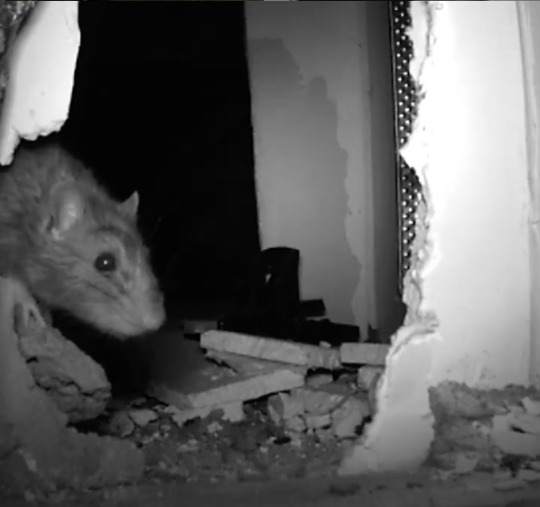
It’s #PSL season and there is nothing better than sitting near the fireplace sipping on your warm beverage UNTIL you see a mouse scurry across the floor! Or even worse, you’re trying to get a good night’s rest and all you hear is scratching coming from the ceiling! The truth of the matter is Summer is almost over, day’s are getting shorter and nights are getting cooler. Mice will start to make their way into your home, and soon! Rat and mice removal with GreenLeaf Pest to make sure it’s not your home!
Did you know that a single mouse can defecate around 50-80 times a day and are major carriers of disease like hantavirus! Crazy right?! Not only do mice defecate and urinate on food prep areas, they can also cause extensive damage to your home by chewing on wires, and tunnelling through insulation. Don’t wait until they become an issue, protect your family and home today by following these simple steps!
Rat and Mice Removal – PREVENTION

When it comes to ensuring your home is rodent free/rat and mice removal, prevention is key. Now is the time to rodent-proof your home for the upcoming Fall & Winter seasons as mice can squeeze through gaps as small as a dime. You can also watch as Mr.Know Bugs walks the property and provides excellent prevention tips:
Part 1 (https://www.youtube.com/watch?v=5QIY2ntJXbk&t=23s)
Part 2 (https://www.youtube.com/watch?v=2EdLkWIfhGs)
Part 3 (https://www.youtube.com/watch?v=SfMcZeZR6hY&t=122s)
1. Check these high active areas to ensure they are tightly sealed:
Use a strong door sweep under doors, even the garage door!
Ensure weather stripping around doors and windows aren’t damaged
Patch cracks in the foundation
Stuff excluder mesh (steel/copper wool) around pipes before caulking
Cover dryers vents, attic vents, soffits etc. with excluder mesh
Cover bricker weeper holes with a stainless steel weep hole cover
(Ask your GreenLeaf Expert ( rate and mice removal) how to buy some from our team)
2. Make your home unattractive to rodents:
Keep grass short and weeds away from the home
Reduce clutter and leaf litter around your home
Secure garbage in tightly sealed bins
Place wood piles away from the home and raised at least 30cm
Eliminate water sources (leaky taps, open drains, sweating pipes etc.)
Keep all food (including pet food) in tightly sealed containers
3. Implement an Exterior Monthly Prevention Program
To protect the home, clients in active rodent communities will hire a professional pest control company, such as GreenLeaf, to implement an on-going exterior program to help control rodent populations on the exterior before they become a problem on the interior. Have a rat and mice (near me) Contact us today to secure an appointment.
Control Options

If you are reading this because you already have a rodent infestation, here are some control methods you can try: rat and mice removal near me
Snap Traps
Live Traps
Rodenticide
Snap traps are effective and easy to use
They usually provide an instant kill, being a more humane control method
Traps should be set perpendicular to the wall, with the baited end of the trap closest to the wall
If rodents have damaged products in your home, use those to bait the traps. You don’t have to use just food to bait, nesting material can also be used to lure rodents
Live traps have a trap door that triggers when rodents walk through them
Entrance to the trap should be parallel to the wall
Place 1 trap per entrance
These traps should be checked at minimum once a day
Depending on the type of rodent you are trying to control and where, rodenticide might not always be the best option
Poisoned baits and anticoagulants can be effective in controlling exterior populations around homes and businesses. They act as a first line of defence before they become an issue inside.
When dealing with an interior rodent infestation a professional should always be contacted when placing rodenticide
Hiring a Professional

If rodents have made their way into your home and you have been unsuccessful in eliminating them, it may be time to consult a professional. A female mouse can get pregnant 4-5 times a year and give birth to 3-14 pups at a time! That’s a lot of mice! Here are some reasons why you should hire a professional:
They understand the biology of rodents; where they live, what they like to eat, how to capture and eliminate them etc.
A professional will inspect the structure of your home for pest conducive conditions; structural gaps, behavioural issues etc. and provide you with advice on how to deter rodents
After inspection, based on observations and activity, the servicing technician would have gathered enough information to setup a proper strategy unique to your rodent issue
Professionals will access key rodent areas such as; attics, garages, pantries, etc.
Because professionals have been trained and understand how to protect your family from rodents, the elimination process will be exponentially quicker.
Tired of dealing with rodents in and around your home? Looking for rat and mice removal near me – Contact us today! One of our service specialists are happy to chat with you and determine which solution is best for you. Don’t wait until it’s too late!
About the Author:
Amanda Pereira, the Operations Manager at GreenLeaf Pest Control, is always happy to help customers with their pest issues. She is a proud Golden Hawk graduating with an Honours BBA (Marketing) from Wilfrid Laurier University. In her spare time, she likes to walk and take pictures of nature.
The GreenLeaf Way, Way Better!
#rodent control#rats#norway rats#rodent elimination#rats and rodent control services#pest control#bait#traps#pest inspection#torotno#markham#hamilton#newmarket#vaughan#insects#contact us#house mouse#fall#winter pests#winter#shelter#election 2021#covid-19#diy#rat diy#tips and tricks#facts and elimination
0 notes
Text
CLUSTER FLIES – NOT YOUR AVERAGE FLIES!

Flies can be a nuisance!
Trying to enjoy a sunny day with a cup of coffee in your backyard or inside your house, chit chatting with your friend and all of a sudden a (cluster) fly comes to ruin your day? Even just one fly can be pesky. Personally, I dislike flies!
It May Be Summer, But Fall Is Around The Corner! And So is Cluster Fly Season!

This may sound disturbing but cluster flies are currently planning their move into your home. Be prepared! You may see the occasional cluster fly during the dead of winter on a nice sunny day, or in droves in the early spring. As cluster flies like to move into homes in the early-mid fall, the end of summer is the opportune time to seal windows and doors, creating a physical barrier. Don’t wait until it’s too late, now is the perfect time to seal any entry points for cluster flies.
Things you should know
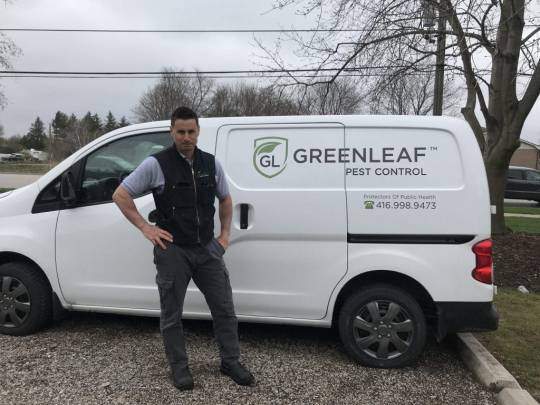
Cluster flies and House flies look alike.
Cluster fly species live for 2 years under ideal circumstances whereas house flies live for 15 to 30 days maximum.
Unlike other flies Cluster flies do not bite humans or animals and are not known to carry any diseases. … whereas Dead Flies inside wall voids, cracks, and crevices may trigger allergic reactions in sensitive individuals.
These pesky flies like decomposing food and sweets!
Physical Characteristics:
A cluster fly has a black/silvery-black checkered body.
Young, newly emerged cluster flies have short light-brown/yellowish hairs on their lower bodies.
Sluggish movement: The cluster fly will fly around the home but at a slower pace than other flies.
Overlapped wings: When at rest, the cluster fly will overlap its wings; the house fly’s wings remain separate.
Clustering at windows: If there is a large population of cluster flies, they tend to cluster along windows or inside attics and usually in little-used areas on warm, sunny days.
PREVENTION IS BETTER THAN A CURE

Seal interior cracks and gaps in the Summer Months
Hire a professional to treat the exterior of your home in the late summer to prevent a fall infestation.
Vinegar and Dish Soap – Fill a bowl slightly with apple cider vinegar, wine or honey with some dish soap. Cover the bowl with plastic wrap with punctured holes or leave uncovered. Flies will be attracted to the smell and will get stuck within the liquid.
Use traps or flypaper near your window or where you are seeing the activity
Are flies still causing trouble? Call the professionals at GreenLeaf Pest Control. We are a fully licensed company. GreenLeaf Pest Control will help protect your home before cluster flies become an issue! Contact us today by calling (416) 998-9473 or send us an email to [email protected].
The GreenLeaf Way, Way Better!
About the Author:
Navjot Kaur, the Digital Marketing Specialist and Web-Developer at Greenleaf Pest Control. Happily graduated from Lambton College in Mobile app design & development. She is new to the pest control world. In her free time, she is an avid gardener, reader, likes to explore and definitely has some great dance moves.
#pestmanagement#pest exterminator#fly#fly control#fly light trap#Toronto#brampton#pest services#pest services bradford#pest control newmarket#richmondhill#pest control near me#fly remmoval#get rid of flies#pests#insects
0 notes
Text
Ouch! Stinging Insects

Every summer I look forward to family gatherings, outdoor barbecues and fun by the pool. And every year without fail, wasps seem to get the impression that they’re invited to all of these outdoor functions. Not only am I frightened that the wasp may sting our precious Luna, but wasps pose a serious health risk to our families.
Did you know, stinging insects like wasps, bees and hornets send more than 500,000 people to the emergency room each year. They are especially active during the second half of summer and early fall when the colonies forage for food that will sustain their queens during the long winter months.
So… Should I be worried about Stinging Insects?
Social wasps can pose a serious health risk to the public, as their venom has been known to cause serious allergic reactions that result in death. Although most wasps only attack when they feel provoked or in danger, some wasps can sting when seemingly unprovoked. Yellow Jackets are known for being the most aggressive in Ontario.
Contrary to popular belief, wasps can sting more than one time, unlike bees. If a wasp lands on you, it’s important to remain calm and wait for the wasp to fly away. Any sudden movements will make the wasp feel threatened, but you can also attempt to brush it away gently.
If you do get stung by a wasp, ice packs can be used to reduce swelling and pain. Should you believe you are having an allergic reaction, seek medical attention right away.
How Can I Prevent Wasps?

In early summer we strongly recommend walking your property to ensure that you have made your yard unfavourable to wasps and stinging insects. Look for the following:
Look for wasp activity and determine if any nests are already forming
Remove garbage frequently
Keep trash cans and recycling covered
Ensure all windows and doors are properly screened
Avoid using sweet-smelling perfumes and outdoor scented candles
When eating outdoors, cover all food
As a precautionary measure, traps can also be purchased from a local hardware store. These traps are useful to deter wasps from outdoor gatherings in the short term.
It is easier to remove a newly formed nest than a full-sized nest later in the season
I Waited Too Long And Now I Have A Huge Nest! HELP!

Nest removal can be extremely dangerous, especially when the colony has been well established and large. Caution should always be taken when approaching a nest and professional help is highly recommended. Our team of trained professionals will complete an inspection of your property, treat and remove active nests and dispose of any contents appropriately. Contact us today at (416) 998-9473 to properly treat nests at your home. We guarantee quick and effective service for Stinging Insect infestations that pose an immediate health risk.
There Are Wasps Living In My House!

Structural colonies should always be addressed by a professional pest control company. If improperly treated, because these stinging insects may make their way into your home and pose a greater health risk to you, your family and pets. These structural nests should never be caulked or sealed as it may divert active wasps further into wall voids and into your home. Don’t wait, contact our team of professionals today to resolve your wasp issue in a quick and effective manner.
About the Author:
Amanda Pereira, the Operations Manager at GreenLeaf Pest Control, is always happy to help customers with their pest issues. She is a proud Golden Hawk graduating with an Honours BBA (Marketing) from Wilfrid Laurier University. In her spare time, she likes to walk and take pictures of nature.
The GreenLeaf Way, Way Better!
#pest control#wasp nest#wasp nest removal#hornet#hornet removal#wasp control#pest control toronto#wasp nest removal brampton#pest control vaughan#pest control markham#summer#summerpest
0 notes
Text
PEST CONTROL IN LONG-TERM HEALTHCARE
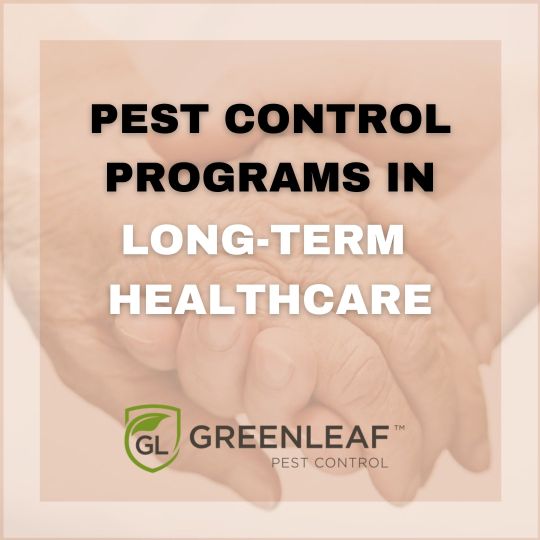
I think we can all agree that visiting any Hospital or Long Term Healthcare Facility (LTC) is somewhat stressful. For many years I visited both my grandparents at a Toronto, Ontario LTC home. It was always an emotionally exhausting visit!
The level of service, workforce and expectations from the government has changed drastically over the last few years. Add COVID-19 into the mix and everyone is overworked, underfunded and the list of issues goes on and on. With so much focus on day to day operational issues pest control and pest prevention has taken a back seat.
From a Pest Control perspective one thing hasn’t changed – LTC, Nursing Homes, Assisted Living Facilities, Hospitals, Clinics and Doctor’s Offices should have NO Tolerance for pests. Simply, pests are major vectors and transmitters of disease. Rodents can chew wires that start fires or cause major IT issues. Pest are nasty and wreck things, especially when they get into network rooms or underground wiring. I think you get my point; pests and healthcare facilities don’t mix.
HIRING A COMPETENT PEST CONTROL COMPANY
– THE GREENLEAF WAY….WAY BETTER –

When it comes to pest control in healthcare facilities, one strategy or program doesn’t fit all. Each facility is different, and different environments feature different pest issues, client expectations and structural challenges. Due diligence is very important.
Let me be clear – Most of the time failure occurs because facilities award the work to the lowest bidder. At GreenLeaf Pest Control, we assess the needs of facility/partners and price them according to the proper time to service (TTS). The more TTS the pest control technician has, the better the service. More proactive inspection and investigation time = less pest problems and a safer environment for staff, patients and guests.
At GreenLeaf we like to make things simple. We approach each facility systematically and break up each area into smaller components to make it more manageable. A scope of work and solution plan is based on our findings and TTS. For example: All food areas, QSR’s and kitchenettes will require more visits and more time to service. We group those areas into one category. Mechanical rooms may go into another category based on time to service and the clients needs.
WHAT THE HECK IS IPM
Adopting a least toxic and non-toxic Integrated Pest Management (IPM) plan is paramount in any healthcare facility. According to Purdue University LINK: https://www.extension.purdue.edu/ipm/ipm1_4.html the four key elements of IMP are:
IPM strategies reduce or eliminate the conditions pests need to survive and reproduce, including water, food, and living space.
Integrated Pest Management (IPM) uses monitoring techniques to quickly identify pest infestations, before pest populations get out of hand.
IPM resolves pest problems by eliminating pest access, removing pest resources, or using carefully targeted, “least risk” pesticide products.
When IPM practitioners use pesticides, they apply them in a way that maximizes their impact on pest populations while minimizing the risks of human exposure.
PROACTIVE, PREVENTATIVE PEST CONTROL
I believe that IPM sounds reasonable and is the right pest prevention system to implement. Remember these words of wisdom – you get what you pay for. Many, many times, pest control services are sold inexpensively and quality of service suffers. Clients then cancel service and expect better service from another provider at a lower price. Unfortunately, it doesn’t work that way; Time to Service costs money.
DAY OF SERVICE

During the regular scheduled pest control service visits (with the right time to service) the trained pest control technician will monitor the facility for the presence of pests and conducive conditions that are favourable for pests. Ants and cockroaches are the most common pests found in healthcare facilities, according to a 2013 survey of Association for the Healthcare Environment (AHE) members, and all pests pose unique threats.
HIGHER RISK PESTS

Flies: The common housefly, Musca domestica, lives in close association with people all over the
world. These insects feed on human foodstuffs and wastes where they can pick up and transport various disease agents. In addition to the housefly, a number of other fly species have adapted to life in human settlements, where they present similar problems. To read more please see this CDC article: https://www.who.int/water_sanitation_health/resources/vector302to323.pdf

Cockroaches: can pick up and transfer harmful bacteria. In certain situations, ants can as well. Cockroachdroppings and cast skins can aggravate allergies and even cause asthma attacks, especially in children and sensitive individuals.

Rats and Mice: can also cause serious health problems. According to the Centers for Disease
Control and Prevention (CDC), rodents are known to spread bacteria like Salmonella and Escherichia coli, as well as more than 35 diseases worldwide, such as hantavirus.

Bed Bugs: A single female bed bug, which feasts exclusively on blood meals, can lay up to 300 eggs in a lifetime, hatched nymphs can become reproductive several months later. Bed bug bites can cause minor to complex skin reactions and, in some cases, psychological concerns. While often linked to multifamily housing and the hospitality industry, bed bugs have become a growing concern in many types of healthcare facilities.
Not only can many pests spread dangerous bacteria that can cause diseases, but also patients with weakened immune systems in healthcare facilities face a greater risk of infection.
COMMUNICATION
I think this goes without saying; communication is paramount in a healthcare facility. Unfortunately, this is often easier said than done. Pest Control Technicians often arrive to perform services during off peak hours. On occasion Management is not available to discuss ongoing issues with their servicing technician. Can you believe they have other priorities other than meeting with us?
I believe that a picture is worth a thousand words. In 2008 GreenLeaf invested heavily in electronic data technology. Unfortunately, we may not always see our designated point of contact (e.g. facility manager or sanitation manager) in person at every visit. Having said that, our GreenLeaf PestPac software allows us to barcode and scan every device that we touch and report this information back to the management team. Data such as pest captures, activity, areas serviced, time to service, material usage, sanitation issues and so much more is provided at every service. One of the greatest features is that the technician can take a picture and attach it to the service report. These reports are then emailed to the client immediately. GreenLeaf believes in complete transparency – service reports are available at your fingertips, anywhere at any time and on any device.
As Pest Control Professionals it is a big responsibility to protect healthcare facilities against the many structural pests that try to get in. A diligent, step-by-step IPM approach is the key to success. Regular inspections, proper time to service and communication. When quality matters, and people trust GreenLeaf.
ABOUT THE AUTHOR
Daniel Mackie aka Mr. Know Bugs is the VP – Quality Assurance at Greenleaf Pest Control. With over 24 years in the pest protection industry, Mackie is a Toronto, Bradford, Barrie and York Region pest control expert. Daniel Mackie is well-known as an industry go-to guy, an innovator of safe, effective pest control solutions, because he is a regular guest on HGTV. In his free time, he is an avid gardener and beekeeper. According to Mackie: “We are Protectors of Public Health”
#longtermhealthcare#pestmanagement#pest control#pest control toronto#barrie#markham#bradford#contact us#pestprofessional
0 notes
Text
Underestimating the Threat Flies Can Have on Damaging Your Business Reputation

The majority of people eating in a restaurant would go back to eating their meal after a fly touched and contaminated it, but almost no one would touch their food after seeing a cockroach crawling on it. The same attitude seen in staff and managers in the food-processing industry (“It’s just a fly, wave it away”), and it cost their business.
When the authorities shut down a local restaurant or a food processing unit, it’s usually because of rodents or cockroaches – seldom is the “innocuous” fly the reason a restaurant goes out of business. And yet, according to entomologists, filth-breeding flies (a term referring to several species of true flies of the order Diptera, including the four subspecies of Musca domestica, the house fly) are at least twice as filthy as cockroaches.
Due to their abundance (uncontrolled, they would cover the whole planet 18 inches deep in just one season), their close association with people, and their ability to transmit disease, filth flies are considered a bigger threat to human welfare than most other household or commercial pests. Flies are known to transmit about one hundred animal and human pathogens, but emerging research shows they may be even more dangerous than we previously thought. Some of the most common diseases spread by flies include:
Dysentery
Diarrhea
Cholera
Typhoid fever
Food poisoning/gastroenteritis
Urogenital and intestinal infections
Conjunctivitis
Poliomyelitis
Tuberculosis
Diphtheria
Yaws
How Flies Contaminate Food?
In many cases, adults with a good immune system are able to fight off the disease agents in food contaminated by flies. However, children, elder citizens, and people whose immune system has compromised by illness or medication are far more exposed to the health hazards posed by pest flies.
In Canada, about 4 million people (1 in 8) are affected by food-borne diseases, which result in 11,600 hospitalizations and 238 deaths every year. These staggering numbers are even greater than those in the U.S., according to a food safety report published by the Conference Board of Canada, which also suggests that half or more of all food-borne diseases in the country are picked up at restaurants, cafeterias, and other food-service providers.
The pathogens carried by flies enter food through one of two ways: (1) direct incorporation of the filth they carry on their bodies and (2) the contamination of food and food-contact surfaces by the microorganisms and metabolic products released by flies while feeding and defecating.
What Happens When Flies Land on Food?

Understanding the ecology of flies helps to explain their role as vectors of disease and allows an efficient selection of control measures. Flies breed, feed, and wallow around in decayed, fermenting, or rotting organic material of either animal or vegetable origin. Among the most important breeding sites for flies are heaps of accumulated animal feces, garbage and waste from food-processing plants, organic manure, sewage, and accumulations of rotting vegetable matter.
After landing on a potential food source, the fly first vomits its gut contents on to the food. Lacking chewing mouthparts with teeth to help them masticate food into tiny, digestible bits. It must use its sponge-like tongue to liquefy any solid food it comes about. To this purpose, fly brings up regurgitated food and saliva and uses it to dab the meal with digestive enzymes. It will gradually turn solid food into liquid the fly can then slurp without much effort. In doing so, flies may also regurgitate bits of human or animal excrement.
Since they vomit repeatedly, flies also need a lot of fluids to stay hydrated, and the need to defecate increases exponentially in relation to the quantity of liquids consumed. They produce feces once every few minutes, passing the remaining bacteria and pathogens in their digestive system on to food for human consumption. Some microorganisms remain in mouthparts for several days. Then flushed out on food with the next salivary flow or defecation.
The body of a fly structurally adapted to pick up pathogens from filth and waste. Its tarsi have a complex structure of hairs and sticky pads. Those pads further enhance the fly’s potential to act as a mechanical vector for diseases.
The True Cost of Infestation

Food-service providers faced with fly issues, cost of control is minuscule compared to negative impact and losses incurred through infestation. Food and food-surface contamination caused by flies can increase exponentially within a brief period. In ideal conditions with unlimited resources, a single fly can defecate up to 50 times in 24 hours. In just two weeks, a single fly can lay more than 1,000 eggs. And the future adult flies will be able to carry as many as one million bacteria on its body.
Establishments impacted by fly infestations can face significant fines and even temporary or permanent closure by the public health department. But even more terrifying than the financial and health-related aspects is whether or not your fly issue will go public. Many public health authorities post inspection online, and a media outlets are making sure information is disclosed to the public.
Word-of-mouth – the primary driver of any business’s success – can become your worst enemy in the aftermath of a fly infestation. According to a recent poll of food-service customers, 60% of restaurant tell five or more people about a pest sighting. A quarter of them would write a negative review or an email about the incident. Considering that more than half of frequent restaurant diners factor online reviews into their dining decisions. Each review you get have a lasting impact on one out of two customers in one of your key.
Client Cooperation Is Key in Any Fly Control Program

Client cooperation is important in just about any pest control program. It becomes essential when dealing with fly infestations in commercial accounts. In lack of chemical control methods similar to those used to control pests such as rodents or cockroaches, sanitation, along with regular inspection and exclusion, becomes crucial in all fly management.
Understanding environmental conditions necessary for growth and development in relation to controlling pest populations is the first priority. Food-contact surfaces, and materials on which flies lay their eggs eliminated from the premises, or isolated from the egg-laying adult.
The frequency of sanitation protocols is also essential in controlling fly populations. Considering that the house fly completes its life cycle within 10 days. Remember, removal of necessary environmental conditions conducted twice a week in order to break the breeding cycle. Garbage cans and dumpsters tight-fitting lids, emptied regularly, and kept as far from the premises as is practical.
Exclusion, another important step in controlling pest fly populations, keeping doors, windows, and vents closed. Properly fitted with screens, and sealing and caulking other access points that flies use. Air curtains or automatic door closing mechanisms, installed over doorways to impede flies from entering the premises.
The best way to keep flies far from your commercial establishment is to be one step ahead of them. And make the pest management a part of your staff’s duties. Through regular communication and cooperation with your pest control provider, your employees can be taught how to properly inspect incoming shipments, report any signs of pest presence, clean up residues, and identify pest-prone areas. Keeping your premises clean is at the heart of food safety and customer experience. And staff education is key in ensuring that no fly will make its appearance in or contaminate your products.
About the Author
Daniel Mackie, co-owner of Greenleaf Pest Control, is a Toronto pest control expert well-known as an industry go-to guy, an innovator of safe, effective pest control solutions, and is a regular guest on HGTV. Mackie, along with business partner Sandy Costa, were the first pest control professionals in Canada to use detection dogs and thermal remediation for the successful eradication of bed bugs. In his free time, he is an avid gardener.
#catching flies#i hate flies#fliescontrol#pestmanagement#pestcontrol#housefly#contact us#toronto#brampton#markham#vaughn#richmondhill#rtobicoke
0 notes
Text
Why Cockroaches Swarm in Summer – What Residents Can Do

Cockroaches are a universally despised pest. They’re simply not pleasant to have in your home. Unfortunately, summer is one of the worst times for roaches. Why? Because cockroach populations tend to explode in the warm, moist heat of the summer.
The only way to prevent a cockroach infestation is to educate yourself about them. Here’s what you need to know about why cockroaches swarm in summer and how you can keep them from setting up a summer vacation home in your abode.
Summertime Is Cockroach Time in Toronto

As mentioned above, cockroaches love the moist, warm air of summer. This makes sense because in the wild they’re mostly found in tropical locations. In contrast, these bugs do not do well in cold temperatures — which is why we don’t tend to see them as much in the fall and winter.
Another reason you may notice more cockroaches? Summer is their biggest breeding season. One the weather gets hot enough, they will begin to breed in earnest — creating even more roaches.
How Toronto Home Infestations Begin

Some people suffer under the misapprehension that if their homes are clean enough, then cockroaches will stay away. Sadly, that’s not the case. While keeping your home clean does help (we’ll get to that in a bit!), cockroaches find all types of ways — and reasons — to invade your space.
Roaches can hitch rides on grocery bags, boxes, suitcases, and even brand new furniture. German cockroaches like to make their homes in the walls of apartments, houses, supermarkets, restaurants, and other buildings where they have a food source close by. American cockroaches, their much larger cousin, are the cockroaches that typically appear in droves in the summer.
American cockroaches prefer warm areas with high moisture. They can get into your home through any tiny opening they can find, but live outside too. They are commonly found in places such as under mulch, in flower beds, landscaping, and woodpiles.
These aren’t the only two types of cockroaches to be on the lookout for, however, as there are many others. All of them have one thing in common, though: They will invade your home in the summer if you don’t take steps to prevent it.
How to Keep Cockroaches Away in Summer
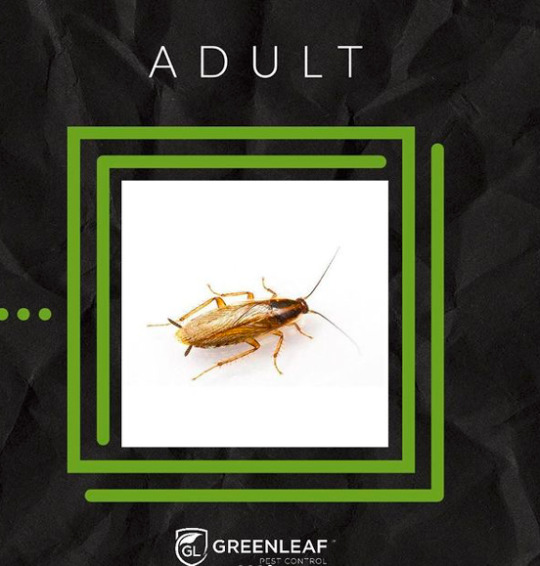
Luckily, there are some actionable steps you can take to keep cockroaches from invading your home this summer. Specifically, you should:
Remove Potential Habitats
You don’t want to provide an inviting habitat for cockroaches in and around your home, either. To help make it as inhospitable as possible, clean up any debris, trash, boxes, and other materials lying around your home, garage, or yard. These are ideal places for summer breeding, which you’re trying to discourage.
Seal the Cracks
As mentioned, cockroaches also gain entry into your home through tiny cracks. Seal up crevices and cracks around the outside of your home to help.
Reduce Humidity
One of the best things you can do is work to control moisture and humidity in your home. You may want to think about using dehumidifiers in places that tend to be damp, such as basements, to help reduce your chances of a roach infestation.
Store Food Properly

Remember, roaches are looking for a food source when they come into your home. If you remove sources of food from their grasp, then you can help to discourage them from invading.
Keep your kitchen clean and tidy, without food sitting out. If you spill something, make sure to clean it up right away — and don’t leave dirty dishes in the sink!
Store food properly, too. Leaving food uncovered makes it a prime target for cockroaches. So keep all food — even dog and cat food — in sealed containers a roach cannot get into.
You can prevent cockroaches from getting into your home if you know what to do!
About the Author:
Daniel Mackie, co-owner of Greenleaf Pest Control, is a Toronto pest control expert and a regular guest on HGTV. He is renowned in the industry as an innovator of safe, effective pest control solutions. Mackie and business partner Sandy Costa were the first pest control professionals in Canada to use detection dogs and thermal remediation for the successful eradication of bed bugs. In his free time, he is an avid gardener.
#cockroaches#cockrochescontrol#pest service#roaches#toronto#markham#cockroachesremoval#pest control#vaughan#newmarket
0 notes
Text
THE EARLIER THE BETTER – SAVE YOURSELF FROM STINGING INSECTS! IDENTIFICATION AND PREVENTION TIPS!

Welcome to the unwanted pest world! Insects, bugs, pests, stinging insects are everywhere and are just part of mother nature. Indeed, they are unwelcome on residential and commercial properties. Most residents don’t like the idea of harming pests, but the need to eliminate them and protect our families is much greater. Harming pests could be a disturbance to nature. It’s always important to consult with fully licensed pest control companies or experts before trying to tackle any pest issue or stinging insects on your own.
Dealing with pests can be daunting, but you have come to the right place. GreenLeaf pest control – Our goal is pest elimination while protecting you and your family, pets and the environment.
What are Stinging insects?
Wasps and Bees!

Identification is very important as there are a number of stinging insects that affect our homes but each with their own unique biology. For example, Yellowjackets and hornets are both actually types of wasps.
Facts about wasps and bees:
Wasps are typically much more aggressive than bees
Bees are pollen collectors where wasps are hunters
If you are not a professional it can be dangerous to approach stinging insects on your own
Wasps have much less body hair than bees
Wasps usually sting to defend themselves. Therefore, if they consider you as a threat they will try to sting you
They can also use their stingers to grab food in order to take it back to their nest
One thing to remember is wasps do not lose their stingers like bees. A bee’s stingers are barbed at the end so that the stingers pull itself out, along with the bee’s intestines. This is why they die.
On the other hand wasps have smooth stingers and can sting again and again, thus wasps do not die when they sting. Wasps can contain small amounts of venom. There are some species of hornets and wasps that can inject venom into their prey. This venom can cause an adverse reaction to its prey and can be significantly dangerous for some people.
PreventionTips: Stinging insects!
You can take action to ensure that stinging insects don’t ruin your fun in the sun!
Tightly Seal Garbages

Most stinging insects are attracted to food sources. Your garbage is a wasps feast.
Wasp and bee removal tip: Keep trash bins tightly sealed until garbage day!!
Properly maintain your lawn and Roof
Wasps also like to set up nests in rotting tree branches, clogged gutters, and messy shrubs. Keeping your lawn and roof clean will help make your home uninviting to these pests.
Eliminate Standing Water
Keeping your yard dry will keep all types of pests away. To avoid an infestation, make sure you remove tires, toys, or buckets that are collecting water in your yard.
Walk with Awareness

Be on the lookout for hives or nests. If you spot a nest proceed with caution and don’t poke at it as the wasps can become aggressive. Especially in mid-late July; wasp and bee season!
Cover up
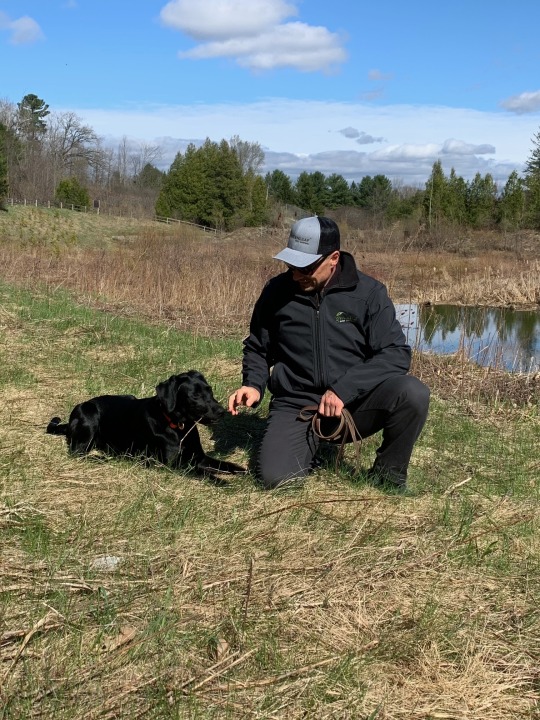
If you can’t resist your BBQ temptation and enjoy an amazing outdoor meal, make sure you wear long sleeves and long pants! A layer of clothing will help you not to get stung!
Sugary drinks

Wasps and Bees love soft drinks, lemonade and sweet tea as much as you do. To avoid being stung by wasps and bees, refrain from these sweet drinks when you are outdoors.
TIP: Drink from a clear glass so that you can easily see any stinging insects that have snuck in!
Still dealing with wasps and bees? If you already have a wasp nest forming on your property don’t try to Do-It-Yourself. You should always contact a qualified pest-control specialist to properly remove the nest. Our technicians at GreenLeaf Pest Control are qualified and ready to help.
GreenLeaf pest control, we’re just a call away! (416) 998-9473
They also know where to look to find other wasps nests that haven’t become a problem yet. The result is pest free yard that you can enjoy without getting the risk of being stung.
For first time users $25 OFF or get extra warranty without an additional charge!
The GreenLeaf Way, Way Better!
About the Author:
Navjot Kaur, the Digital Marketing Specialist and Web-Developer at Greenleaf Pest Control. Happily graduated from Lambton College in Mobile app design & development. She is new to the pest control world. In her free time, she is an avid gardener, reader, likes to explore and definitely has some great dance moves.
#wasp removal Toronto#wasp & bee removal#how to get rid of wasp problem#Pest control services#Bee & wasp removal in Markham#wasp nest removal Bradford
0 notes
Text
Battling Gypsy Moths – Is it too late?
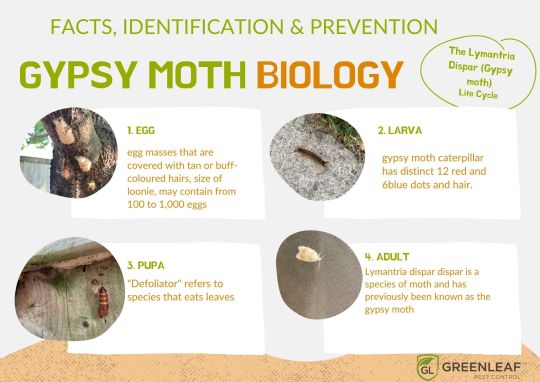
I am walking down a beautiful trail, taking in the lovely scenery and BAM Gypsy Moth to the face. Not exactly what I classify as a peaceful stroll through nature! Don’t get me wrong caterpillars hanging from trees are just as part of nature as the beautiful cardinal chirping in the maple tree, however, the cardinal tends to not invade my personal space as I take in the beautiful Canada we live in.
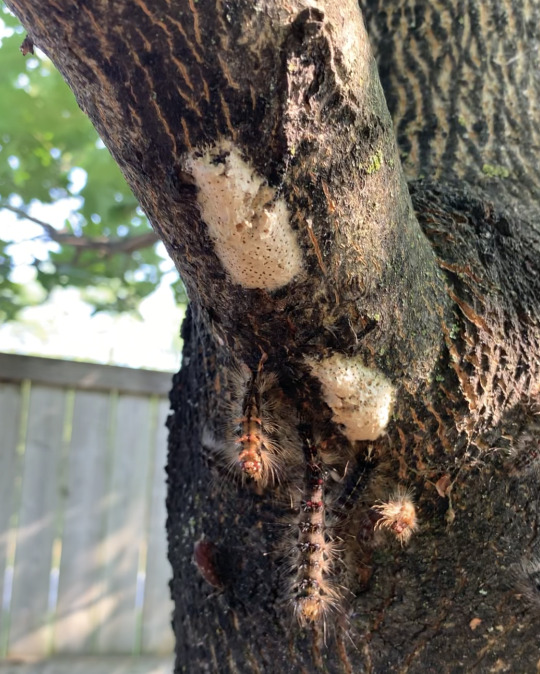
One thing about Gypsy Moths that has really caught my attention this year is that those hairy little guys have really amped up my allergies. Did you know that the little hairs on these guys contain Histamine. That’s right, itchy, scratchy, rash inducing histamine. Now we all react differently, but let me tell you, some of the stories I’ve heard from friends and neighbours! Some are just horrendous! I had a friend who had major rash symptoms from a gypsy moth landing on their neck, they even had a hard time breathing! Sounds like a horror movie? I think so!
It’s July … Isn’t it too late to address Gypsy Moth (Lymantria Dispar) issues?

Well, it’s definitely a little late to apply a BTK (Bacillus thuringiensis kurstaki) solution to protect your trees, but not all hope is lost. Gypsy moths spread easily and quickly, so be thorough in your search! In July pupae and egg masses can be found in many places around our own backyard.If you see pupae or egg sacks don’t ignore them. Physically removing them goes a long way into protecting your trees for next year!
Here are some common areas to search:
underneath branches
on tree trunks
fences
patio furniture
firewood
swing sets, boats, etc.
How do I collect egg sacks and pupae properly?

This is the fun part! Feel free to use your hands and a knife to scrape and collect the pupae and eggs into a bucket. *Be sure to wear gloves when handling pupae, don’t forget their hairs contain histamine!* If you’re a little squirmish like me, a shop vac can be used to suck them up. (PSSST … don’t forget to remove the filter!)
Now that you have taken a lovely stroll around your backyard and removed all these masses, what do you do with the eggs? Easy, BURN THEM! No, simply put them in a hot soapy water, bleach or ammonia based solution.
Our Technical Director Daniel Mackie has filmed a great video showing you were to look and how to collect pupae and egg masses. Check it out here:
What about next year?

At GreenLeaf Pest Control we are firm believers that preventative measures in pest control go a long way. If Gypsy Moths devastated trees on your property this year, be sure to have a preventative treatment completed in the early spring season (April/May). Timing is very important when it comes to treating Gypsy Moths at larval stage. Pre-Book your appointment with us today and ensure you are covered for 2022! Contact us at (416) 998-9473 or [email protected] to save your spot!
About the Author:
Amanda Pereira, the Operations Manager at GreenLeaf Pest Control, is always happy to help customers with their pest issues. She is a proud Golden Hawk graduating with an Honours BBA (Marketing) from Wilfrid Laurier University. In her spare time, she likes to walk and take pictures of nature.
The GreenLeaf Way, Way Better!
0 notes
Text
PEST MANAGEMENT PROGRAMS FOR ORGANIC FACILITIES

Yes, even Organic and certified Organic businesses need pest control. Once found only in specialty places like health food stores, Organic food is now a regular feature at most supermarkets. Proactive and preventative pest management companies like GreenLeaf Pest Control have a fantastic opportunity to partner with facilities that process also handle Organic products to implement responsible Integrated Pest Management (IPM) programs.
WHAT IS ORGANIC FARMING AND IS IT BETTER?
The word “Organic” refers to the way farmers grow and process agricultural products, such as fruits, vegetables, grains, dairy products and meat. Organic farming practices are designed to meet the following goals:
Enhance soil and water quality
Reduce pollution
Provide safe, healthy livestock habitats
Enable natural livestock behavior
Promote a self-sustaining cycle of resources on a farm
MY FACILITY IS ORGANIC OR NATURAL – DOES THAT MEAN NO PESTICIDES?

No, by creating a pest management plan that fits the following guidelines set out by the Canadian Organic Standards (COS) or National Organic Program (NOP), pest management professionals can provide effective pest management solutions that perfectly suit the needs of facilities that produce, handle or distribute Organic products.
Firstly, The most common misconception is that no pesticides used in Organic facilities. Secondly, The second most common misunderstanding is that the only pest control products that can be applied in Organic facilities are non-synergized pyrethrin’s, boric acid, Vitamin D3 (cholecalciferol), insecticidal soaps and oils, diatomaceous earth, and some other products that you can find on the Organic production systems: permitted substances list .
The real truth about what pest management professionals can and cannot do in Organic facilities lies in a careful reading of the rules; in adopting a commitment to the intent and spirit in which the rules conceived; and in carefully following the rules as they written. Ultimately it is about following the rules, effective communication and working with your client to not compromise their brand….and yours too!
IN A NUTSHELL…
Like many government documents there are hundreds or pages to read about do’s and don’ts. Here is a very high level summary for food operation/production facilities.

Organic operations in Canada remain subject to all applicable laws and regulations. Substances that appear in CAN/CGSB-32.311, Organic production systems — Permitted substances lists, are subject to the Pest Control Products Act (PCPA) or the Food and Drugs Act (FDA) when used in Canada as pesticides or disinfectants. Health Canada’s Pest Management Regulatory Agency (PMRA) is the federal authority responsible for the regulation of pest control products (including sanitizers) under the PCPA Regulations. Disinfectants regulated by Health Canada’s Therapeutic Products Directorate (TPD) under the FDA Regulations following:
CAN/CGSB-32.310, Organic Production Systems – General Principles and Management Standards, describes the principles and management standard of Organic production systems.
CAN/CGSB-32.311, Organic Production Systems – Permitted Substances Lists, provides lists of substances that allowed for use in Organic production systems.
If you use a pesticide: If pest and disease control substances that are not listed in CAN/CGSB-32.311 are used under any mandatory government program, the operator shall monitor and document their use.
NOTE: In the event of emergency pest or disease treatment, Canadian operators are required to notify their certification body immediately of any change that may affect Organic product certification.
Facility pest management programs and post-harvest pest management programs such as:

8.3.1 Good production and manufacturing practices can adopted to prevent pests. Pest management practices shall involve the following, in descending order:
a) the removal of pest habitat and food;
b) the prevention of access and environmental management (for example, light, temperature and atmosphere), to
prevent pest intrusion as well as reproduction;
c) mechanical and physical methods, such as traps;
d) lures and repellents, as listed in Table 8.2 of CAN/CGSB-32.311.
ORGANIC PRODUCTION SYSTEMS : PERMITTED SUBSTANCES LISTS ARE FOLLOWING
Borate (boric acid)
Mined sources of sodium tetraborate and octaborate permitted as wood preservatives.
Permitted for structural pest control (example: for ants).
Direct contact with Organic food or crops is prohibited in the case of products formulated as pesticides.
Boron
The following soluble boron products permitted:
a) borate (boric acid);
b) sodium tetraborate (borax and anhydrous); and
c) sodium octaborate.
May only be used when soil and plant deficiencies are documented by visual symptoms or by testing of soil or plant tissue, or when the need for a preventative application can be documented
See Table 4.2 Micronutrients.
Diatomaceous earth
Non-calcined forms.
May contain substances listed in Table 4.2 (Column 2).
Pheromones and other semiochemicals
All sources permitted for pest control.
Pyrethrum
May be combined with Formulants used in crop production aids.
See Table 4.2 Botanical pesticides for restrictions.
Cholecalciferol (vitamin D3)
Permitted if used outdoors and inside
greenhouses for rodent control
when methods described in 5.6.1 of CAN/CGSB-32.310 have failed.
Prohibited inside on-farm food processing as well as food storage facilities.
Organic Handling System Plan
For a pest management professional to become part of the “Organic Handling System Plan” that must be created by companies looking to become Organic with their products, a written pest management program is required. In this program, there will be a great deal of emphasis placed on documentation and inspection, also the pest management program will be structured around a system of monitoring, which includes insect and rodent monitors.
Many pest management professionals have already been using these techniques to control pests in facilities, but now we know that the GreenLeaf Pest Control IPM programs are in fundamental agreement with the rules and guidelines set forth by the Canadian Government, NOP and the many other invested bodies. By formalizing the pest management company’s commitment to the philosophy of Organic handling, facilities that handle Organic products know they can trust the services of pest management professionals to follow the guidelines that allow them to be marketed as Organic.
However, For more information on pest management programs in Organic facilities contact GreenLeaf Pest Control. Our team of highly skilled professionals as well as our robust documentation system, we will ensure compliance with Good Manufacturing Practices for food processing facilities.
ABOUT THE AUTHOR
Daniel Mackie aka Mr. Know Bugs is the VP – Quality Assurance at Greenleaf Pest Control. With over 24 years in the pest protection industry, Mackie is a Toronto, Kitchener / Waterloo, Vaughan and GTA pest control expert. Daniel Mackie is well-known as an industry go-to guy, an innovator of safe, effective pest control solutions, also is a regular guest on HGTV. In his free time, he is an avid gardener and beekeeper. According to Mackie:
“We are Protects or Public Health”
#Food Processing facilities#GreenLeaf Pest Control#Organic Pest Control#pest management provider#Pest Management Services#pest control toronto#pest Control Bradford#Pest Control Missisauga
0 notes
Text
WASPS ARE SERIOUS IN TORONTO – HOW TO KEEP THEM AWAY

There’s nothing that will ruin a day enjoying your backyard quite like a wasp attack. While wasps have their place in the ecosystem, that place doesn’t have to be in your yard. Learn why wasps removal, hornets nest removal is essential with GreenLeaf pest Control!
Learning how to identify and deter wasps will keep your yard enjoyable all year long.
The Three Worst Wasps in Toronto
There are three main types of wasps that cause problems here in Toronto. They all have different habits and attacks, so telling them apart is important. If you’re looking for how to get rid of the wasp problem, the first step is figuring out what species you’re dealing with.
Yellowjackets
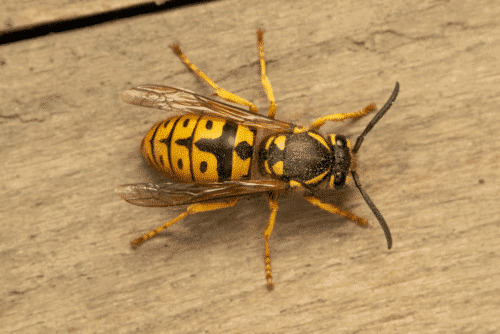
Yellowjackets are a common wasp that’s immediately identifiable by its bright yellow color. They typically grow to be about half an inch long, and they don’t tend to be aggressive.
However, if you crush a yellowjacket, every other yellowjacket in the area will smell the dead wasp and come to attack.
You’re most likely to spot yellow jackets when you’re eating outside because yellowjackets love the smell of sugar and meat. Yellow Jacket nests can be hard to spot because they’re the size of a baseball or smaller.
Hornets

Hornets are the larger, more painful cousin of yellowjackets. They are black with yellow accents, and they can reach as long as two inches. They eat sugar, so they will congregate around open drinks and sometimes hummingbird feeders.
It’s easier to spot hornet nests because they can reach the size of a basketball. Hornet nests are often found on tree branches and the underside of your eaves.
Paper Wasps

They look alarming, but they don’t become aggressive unless their nest is threatened. Paper wasps build nests made out of “paper” anywhere from inside trees to inside your attic.
These wasps are about three-quarters of an inch long, with red-brown coloring and yellow or orange bands. Expect anywhere from twenty to two hundred living in a place at once.
How to Keep Wasps Away
Most wasps won’t attack unless they feel threatened. However, pets and children can trigger a wasp’s defense instinct and lead to multiple, painful stings. That’s why preventing wasps in the first place is important to most homeowners for wasps removal.
Seal Your Garbage Receptacles

Most wasps are attracted to food sources. Open garbage cans are a great way to attract wasps, especially yellowjackets. Since wasps largely feed on sugar and fat, your garbage is their feast. Wasps removal tip: Keep trash locked away until garbage day to keep wasps from settling in.
Properly Maintain Your Lawn and Roof

Wasps also like to set up nests in rotting tree branches, clogged gutters, and messy shrubs. Keeping your lawn and roof clean will help make your home uninviting to these pests. That includes trimming dead branches, pruning shrubs, and keeping your gutters neat.
Eliminate Standing Water

Finally, like all wildlife, wasps appreciate easily-available water. Standing water like birdbaths, puddles, animal water dishes, and even clogged gutters can all make your property more appealing. Keeping your yard dry will keep all types of pests away.
If you already have a wasp issue, you should reach out to qualified pest-control specialists. GreenLeaf pest control or Wasp removal specialists have the equipment for wasp nests removal safely from your property without getting stung or leaving wasps behind.
They also know where to look to find other wasps nests that haven’t become a problem yet. The result is pest free yard that you can enjoy without getting the risk of stung.
About the Author:
Daniel Mackie, co-owner of Greenleaf Pest Control, is a Toronto pest control expert and a regular guest on HGTV. He is renowned in the industry as an innovator of safe, effective pest control solutions. Mackie and business partner Sandy Costa were the first pest control professionals in Canada to use detection dogs and thermal remediation for the successful eradication of bed bugs. In his free time, he is an avid gardener.
#Pestcontrolservices#Bee&waspremovalinMarkham#waspnestremovalBradford#yellowjacketnestremoval#howtogetridofwaspproblem#Waspremovalspecialists#waspremovalToronto#newmarket#Pestcontrolservicesnearme
0 notes
Text
THIS IS THE TIME OF THE YEAR WHERE CRAWLING INSECTS ARE ON THEIR WAY TO YOUR PROPERTY!

Insects are everywhere! This is the time of the year when crawling insects are crawling inside and outside of your property. Indeed, Canada’s weather is unpredictable! After a Canadian winter, people wait for summer whereas crawling insects make their way to your home through cracks in the foundation and dark, wet places to survive. Summer is the best time to be outside exploring, but hot and humid temperatures bring nasty INSECTS inside our properties! When temperatures rise for us, don’t forget they rise for crawling insects as well!! What they are looking for is a moist or wet place inside or outside your property to thrive. Common areas that you can find in and around the home are; the basement, bathroom, closets, floor drains, or under cardboard boxes and under concrete slabs.
For people, all pests look alike but the fact is they are not – one pest is characterized into different spices or categories! If you are eager to know more about pests, this post will help you out!
Crawling Insects: You should be prepared in advance!
What They Are, Prevention Tips and how to get rid of them!
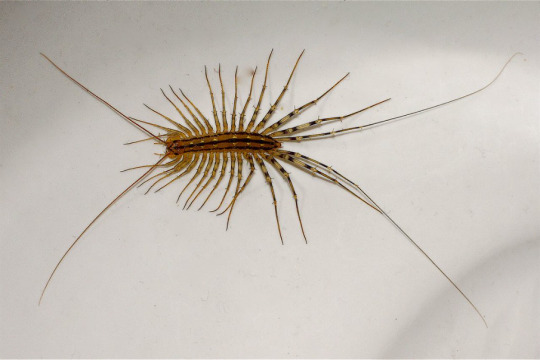
Centipedes:
Centipedes are Yellowish to dark brown, sometimes with darker stripes or markings. They are elongated, flattened, worm-like and 4-152 mm in size. Centipedes are sometimes called house centipedes or “hundred-leggers” because of their many pairs of legs. They are widely distributed throughout most of Canada, the United States, and the world.
Prevention:
Remove piles of leaves and grass clippings, logs, stones, and rocks on your property. Store firewood off the ground. Provide adequate ventilation in basements, attics, and crawl spaces. Seal holes, cracks and gaps that enable outdoor centipedes to get inside a home.

Millipedes:
Millipedes belong to a class of soil arthropods that have two pairs of legs on each body segment. As they grow, millipedes increase their length by adding body segments. With each additional segment comes two pairs of new legs. In Ontario, most millipedes lay clusters of 20-300 eggs in nests buried in the soil.
Prevention:
The most effective way to prevent a millipede infestation is to reduce areas of moisture in and around your home. Make sure your foundation, basement, and crawl spaces are dry by using dehumidifiers if needed. Seal holes, cracks, and gaps that enable outdoor millipedes to get inside a home and ensure there is proper ventilation. To get rid of in-house millipedes provides an adequate vacuum.

Silverfish:
This insect gets its name from its silvery, metallic appearance and fish-like shape and movements. Silverfish have no wings, but they run very fast. Millipede found anywhere in a home but mostly prefers humid, moist conditions. They eat linen, rayon, and cotton fabrics as well.
Prevention: To prevent silverfish repair leaky pipes and drains or repair any mouldy or wet wood. Consider a dehumidifier for your home to reduce humidity. Keep food items sealed at all times.
Fact: Silverfish can survive for weeks without food or water.

Earwigs:
Earwigs have slender, flattened bodies, 6-35mm long with antennae and a pair of large pincers. But few earwigs fly, and many species are wingless. Earwigs hide during the day under debris or in dark spaces, emerging at night to feed on plants, organic waste, and smaller insects.
Prevention:
Earwigs prefer moist protected areas; they usually congregate in areas with high condensation such as unventilated basements. Earwigs are also attracted to dirt and leaves, so an unfinished basement floor is an ideal environment for these pests. Using a dehumidifier and cleaning up cement floors can help prevent earwigs from getting comfortable in a household.

Sowbugs:
Sowbugs also called isopods, woodlice and pill bugs. These creatures are not insects but more closely related to shrimp, crabs, and lobsters. Most pill bugs are grey to brown in colour and about one-fourth of an inch long with seven pairs of legs. They live in damp places – under rocks, logs, leaves and mulch. Moisture-seeking sowbugs invade structures but do not damage indoors.
Prevention:
To prevent an infestation, seal cracks in the structures, install door brushes to fill gaps beneath doors, and correct moisture problems.

Spiders:
Spiders are not really bugs nor are they insects. But like insects, they are arthropods related to crabs, lobsters, shrimp and similar organisms. Unlike insects, spiders have a two-part body, a cephalothorax and abdomen.
Prevention:
Effective spider control begins with IDENTIFICATION! To know whether the spider is a hunting spider or web hanging spider. Control can be as simple as destroying the webs and squashing the spiders that roam in search of prey. A vacuum cleaner works well too and leaves less mess. Vacuuming spiders and their webs as good as it is a non-toxic method. Also, use yellow “bug lights” especially outside of your property instead of white light or mercury lights as this helps deter them. Spider elimination is a combination of several control methods. Non-Toxic methods combined with IPM (integrated pest management) your home can be spider-free.
Even after applying proper prevention methods to eliminate crawling insects on your own, and if you are still facing issues contact GreenLeaf Pest Control! They will help identify your pest issue also properly layout a treatment plan that is best suited for you and your family.
The GreenLeaf way, Way Better!
About the Author:
Navjot Kaur, the Digital Marketing Specialist and Web-Developer at Greenleaf Pest Control. Happily graduated from Lambton College in Mobile app design & development. She is new to the pest control world. In her free time, she is an avid gardener, reader, likes to explore and definitely has some great dance moves.
#silverfishcontrolBarrie#silverfishcontrol#crawlnginsectsfactindentification&Prevention#centipederemovalMarkham#crawlingpeststips#barrie#brampton#missisauga#bradford
0 notes
Text
Student Living, Partying & Pests: A guide to pests in modern day student living

They say your college years can be some of the best years of your life. And they are, until one night you come home to find cockroaches all over your roommate’s dirty dishes and hundreds of empties. Sounds like a nightmare!
Dealing with the stress of school is already overbearing enough, students don’t need the added stress of dealing with pests and unsafe living conditions. Some pests can pose serious health risks and that’s why we’ve created some helpful best practices for prevention, identification, elimination that can be shared with students.
Prevention – Identification – EliminationPest Prevention
Pest Prevention is one of the most important efforts you can make to ensure living in a safe, pest-free environment. This is an often overlooked step, especially as a young student who has much more important things to worry about. Here are some simple tips to keeping pests out:
Keep Food tightly sealed

Food should be kept in tightly sealed glass or plastic containers. This will prevent food contamination in the event of a pest infestation, but also remove food sources.
Keep things Clean!

This is probably the hardest. By keeping your living space clean you will be removing many food sources and hiding spots for pests to harbourage. Piles of dirty dishes, greasy stovetops and mucky floors will only invite and feed pests within your home. Keep things clean.
Take-Out should stay out!

We all enjoy ordering from our favourite restaurant, but take-out containers create a great hiding spot for pests, such as cockroaches. Be diligent in disposing of all take-out containers outdoors and leave recycling bins and garbage bins away from the home.
If it’s dry they will die!

As most pests thrive in high moisture areas, keeping your home dry will pose an unfavourable harbourage area for pests. Keeping humidity levels down by using a dehumidifier will go a long way. Also reducing the amount of pooling water, and fixing any leaky taps will also prevent pests from thriving.
Pest Identification
While you’ve done everything right and you still see bugs! Know what? Before jumping to the closest can of Raid and spraying it all over your home, there are a few things to think about first.

Identifying the Pest: Each pest reacts differently to different treatment methods. Sometimes spraying can actually make things worse. Be sure to properly identify what you are seeing before doing any DIY treatments.
Securing a Sample: If you are unable to identify the pest, always ensure to secure a sample so a pest professional can help you identify what you are dealing with. This will allow your trusted pest prevention company to provide you with proper protocol in eliminating that pest.
Pest Elimination
Still, seeing those unwanted pests in your home? Always seek professional help first. By consulting with a trained pest control technician not only will our team be able to help provide elimination, but we will also provide you with the education and tools you need to keep pests out in the future.
About the Author:
Amanda Pereira, the Operations Manager at GreenLeaf Pest Control, is always happy to help customers with their pest issues. She is a proud Golden Hawk graduating with an Honours BBA (Marketing) from Wilfrid Laurier University. In her spare time, she likes to walk and take pictures of nature.
The GreenLeaf Way, Way Better!
#pest control#cockroaches control services#cockroaches removal Toronto#pest control toronto#barrie#bradford#missisauga#brampton#newmarket#Toronto#GreenLeaf Pest Control
0 notes
Text
INSECT LIGHT TRAPS (ILT’S) – BUG ZAPPERS – FLY LIGHTS

I’ve been in the pest management industry for over 24 years now. I’m one of the lucky graduates of the Environmental Pest Management Program. I not only learned from some great professors but also worked for some amazing companies. Ingrained in my DNA and the soul of GreenLeaf Pest Control is that pest management professionals play an extremely important role in public health. We are protectors of public health!
One of the pests that I dislike the most is flies…..especially when I’m eating! I don’t want to get into a big lecture on how these disgusting insects sponge up fresh moist feces and then vomit on your food. Let’s just say, flies have known vectors of foodborne illnesses, and therefore, pose a risk to the public. Remember the Pepto Bismol commercial “upset stomach…..diarrhea!”

foodborne illnesses, and therefore, pose a risk to the public are known for pests vectors. To keep our food supply safe, food processing facilities and their pest management partners have a clear objective – keep pests out and if they get in, use monitoring and control strategies to eliminate them. This is particularly true for insect light traps (ILTs). ILTs are used to monitor and control one of our highest risk pests in regard to food safety – FLIES.
BACK TO THE TOPIC AT HAND
Gone are the days when the Technician would show up routinely to fog, ULV/ULD, bomb a facility to control flies. We simply know better now and these fogging’s never addressed the root cause of the fly issue. In addition, the over-application of pesticides posed risks to human health and food safety. In a nutshell, the spray and pray model wasn’t the right approach. An integrated, when looking at fly control multipronged approach needed. One key aspect of fly management is the use of Insect Light Traps (ILT’s).
WHY USE INSECT LIGHT TRAPS?
The purpose of using light traps is to monitor the populations of a particular flying insect. Again, these are powerful monitoring tools and will likely not magically fix your fly problem.
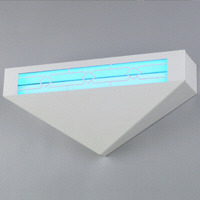
TWO COMMON TYPES OF INSECT LIGHT TRAPS (ILT’S)
While both styles use light to attract these pests, they differ in what happens to the insect once it enters the trap.

Glue boards style units capture insects
Electrical grid units (AKA Zappers)
ILTs that use glue boards, the insect is drawn to the trap’s light and then caught on the glue board’s sticky surface.
ILTs that use an electrical grid, the insect is drawn to the trap and then electrocuted and collected in a tray below.
Insect light traps are designed to offer ongoing monitoring of flying insect populations and provide some level of control. Many types of insects can be attracted to light traps, and a survey of a light trap’s catch tray or glue-board can tell you a lot about what is happening in that facility.
As the name suggests, it’s the special bulbs that attract insects. The blue light emits ultraviolet (UV) wavelengths. Often referred to as
“black light,” its wavelength is typically between 300 and 400 nanometers.
WHERE TO USE LIGHT TRAPS
Light traps can generally be used just about anywhere, but a few variables do apply to each situation:
The client’s attitude is important with regard to his or her expectations about how the traps will be used. The traps should not be viewed as control mechanisms, because they probably will not eliminate all of the flying insects in the facility.
Sanitation is also very important in the control effort. Once the device is used to identify the problem and point it out to the client, the traps then become valuable monitoring devices.
In Canadian facilities, there are some general guidelines to use light traps. In general, these regulations have been designed to prevent contamination of food with insects or insect parts (that’s the extra crunch you don’t want).
The size of the light trap can make a difference in its attractiveness and should be considered when purchasing light traps. Certainly, The intensity of emitted light will have some effect on the trap’s attractiveness. As the light UV output decreases, it is less attractive to insects.
ONGOING BULB MAINTENANCE
There are two ways of testing the intensity of the light. One way is to replace the bulbs with new ones at regular intervals. As a general rule of thumb, In peak season May they replaced annually
You can also use a meter that will measure the ultraviolet output of the bulbs and tell you when their output is decreasing.
LOCATION, LOCATION, LOCATION

The most aspect use of light traps is arguably where they placed. Many times, the placement will depend on the actual conditions you are working under. In most cases, you are trying to head off the introduction of these pests, placing them low along walls protected from damage, will work best in capturing flying insects.
At GreenLeaf we are always concerned about a professional appearance. This also goes for the products that we purchase and install at a client’s location. Not all ILT’s need to look so commercial and ugly. Light traps vary considerably in appearance these days. Wall sconces have become an interesting addition to the styles of traps available, and certainly are more aesthetically pleasing than hanging glue sticks or flypaper from ceilings. If you’re a restaurant, QSR or have a client-facing business these lights are ideal for you.
ILT MAINTENANCE AND COSTS
The large industrial fly light traps are manufactured in various sizes and typically emit anywhere from 30 to 80 watts of energy. GreenLeaf only uses Safety Coated shatterproof bulbs in all our ILT’s. Having said that, this is a requirement for all food facilities (Yes, I’m referring to you…..bad pest control companies)!
As mentioned earlier, most manufacturers recommend replacing bulbs once a year. This is a good rule of thumb, but consider the situation where the ambient UV light has changed, or if new lights have been installed in a remodelled area. Either situation can affect the light competition, thus hampering the effectiveness of the fly light trap. Using the UV-A Meter may be a good idea to monitor these situations.
Cleaning and recording trap capture also takes time. Reports should be filed on what is being caught and what implications this may have on increasing sanitation problems or outside influences on the facility. As with any pest control program, the success of a fly control and monitoring program, using fly light traps, is often related to the time spent at each job. As the saying goes…..time is money.
THIRD-PARTY AUDITING STANDARDS
Fortunately, our third-party auditing bodies have very clear standards on ILT placement in relation to food and the impact it has on food safety. Some auditing groups specify how many feet should stand between food and ILTs. For example, #AIB and #Primus GFS state that does not place ILTs within ten feet of any food, whether it’s raw, processed food, etc. On the other hand, #NSF Cook & Thurber say eight feet should be the minimum distance.

Not all auditing groups give you a distance; they are effectively supporting the same standard in using the language “placed so as not to contaminate the food” within their requirements. This is an important placement consideration because ILTs should attract flying insects towards them, and not towards food.
ILT RISKS
There can be a risk of flying insects dying and then falling out of the device. This is particularly true for electrocution-style ILTs, where the electrocution may cause the insect to explode, potentially allowing insect fragments to fall outside of the collection tray. Never placed ITLs near food and never above food and food surfaces. The risk of escaping insect parts emphasizes the need for the distance between electrocuting ILTs and any food source.
ABOUT THE AUTHOR
Daniel Mackie aka Mr. Know Bugs is the VP – Quality Assurance at Greenleaf Pest Control. With over 24 years in the pest protection industry. Mackie is a Toronto, Kitchener / Waterloo, Vaughan and GTA pest control expert. Daniel Mackie is well-known as an industry go-to guy, an innovator of safe, effective pest control solutions, and is a regular guest on HGTV. Mackie, along with business partner Sandy Costa, were the first pest control professionals in Canada to use detection dogs and thermal remediation to eradicate bed bugs. In his free time, he is an avid gardener and beekeeper. According to Mackie: “We are Protects or Public Health”
#fly management#Flies light traps#household or commercial pests#Toronto house flies#pest control services#Barrie#Bradford#missisauga#Newmarket
6 notes
·
View notes